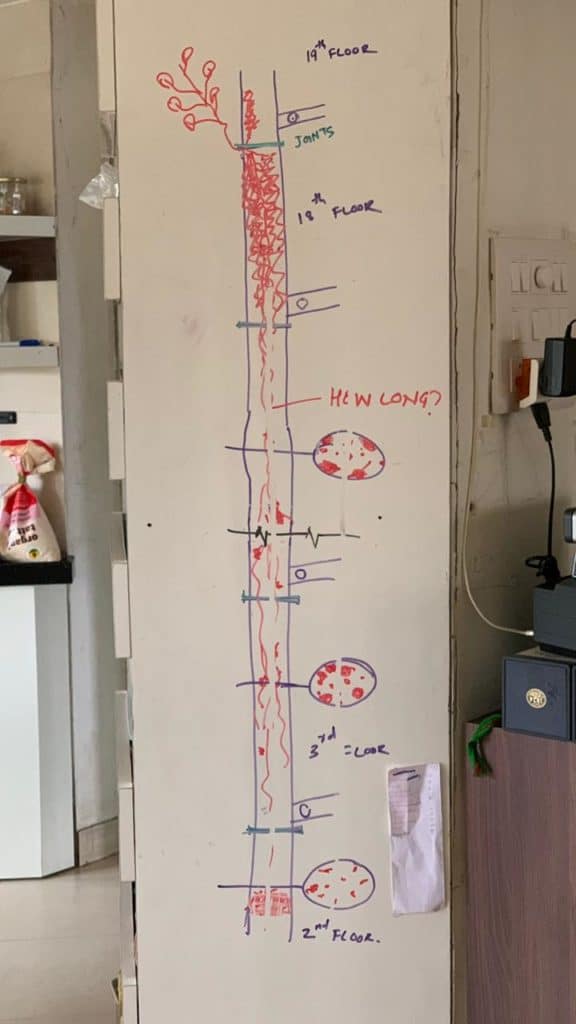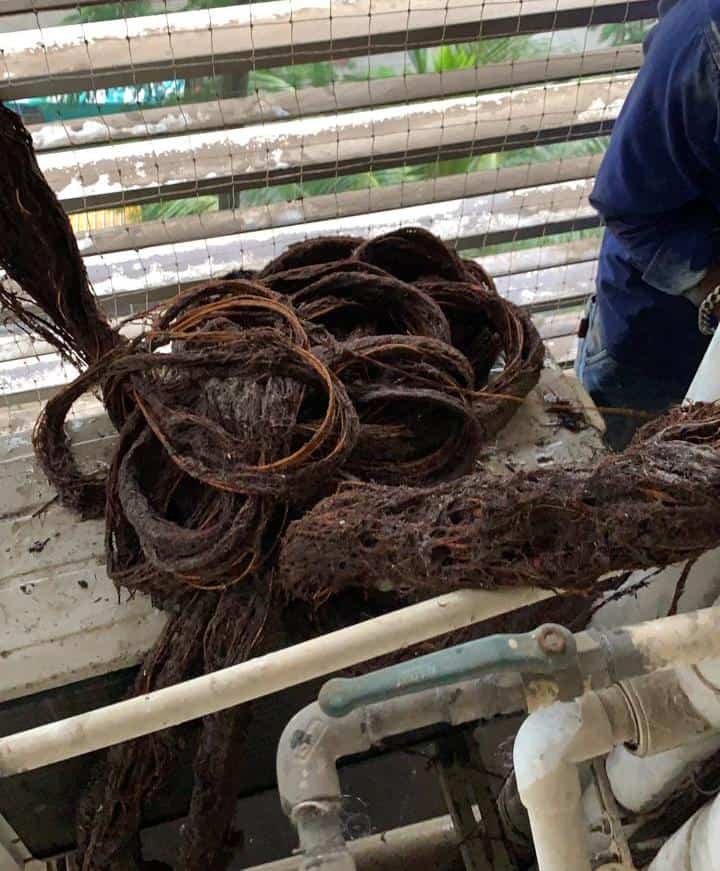In my 3rd floor apartment water gushed out of the bathroom floor drain, much like what happens on the roads on one of those manic Mumbai monsoon days. There surely was a blockage in the drain pipe somewhere, resulting in back flow. “Get the drain plunger,” shouted my wife, but little did we realise that a drain plunger would be an insignificant piece of equipment in the scheme of things.
Quickly, my adrenaline-laden blood recalled an evening walk conversation with my friend who lived on the 19th floor. He had had a similar experience just the other day, and when fixing it, they had found that the drain pipe that ran outside the building was blocked with roots.
Peepal trees (Ficus religiosa, Strangler Fig) are found growing on many concrete structures all over Mumbai. In our building too, we find them sprouting from joints and gaps on the building’s surface.

While they’re periodically removed, they’re tough to get out from the root. They are so resilient that if the roots remain, they sprout back quickly, and the roots keep growing even if the tree above seems small. At the 19th floor, the roots had made their way into the drain pipe, and over time, grown enough to block the pipe.
I connected this incident of blockage with mine, and rushed to check with our security guard if he knew anything about drain clearing work happening. Were they still clearing the drain pipe and doing pressure watering or something? They just had to stop as my home was getting flooded.
It seems that the blockage was cleared, the pipe was replaced and the workmen carried away a couple of bags of roots and debris. Rats! Most definitely some of the debris must have fallen and blocked the pipe just below my 3rd floor. By this time, I’d reached out to the maintenance staff in the building and took the plumber to my home. We had to wade through a couple of inches of water that was engulfing my home like a river, and still flowing! We sleep on floor mattresses instead of cots, so you can imagine the anguish.
For immediate relief from the water, we had to get the drain redirect plug outside the building opened, so that water flowing in the pipe would flow outside directly instead. The next couple hours were spent mopping up the water, and we shared some bits of our experience in videos, photos and text on our local Whatsapp group. We have Covid patients in our building and were very worried about the possibility of the drain water carrying the virus. One message said the positive patient on a floor above had tested negative couple days ago, and this mellowed horrible thoughts and brought a mild sense of relief to our imagination. The real problem was not solved yet. Residents of all the floors had been told not to use that particular bathroom, but this was a temporary solution.
The next morning, I thought more about the problem and made this sketch of what possibly could be happening in that drain pipe. Being a civil engineer myself, and with wide exposure to nature (my wife is a wildlife biologist), I was in a position to connect my experience with recollections of the Ficus religiosa roots I had seen over the years.

I suspected that the roots had grown all the way down. I showed this to the plumber and the contractor who had worked on the 19th floor, but they said that it was quite impossible for the roots to come so far (about 15 floors). To find out, the pipe was cut.
We found the roots – thick and strong as ever, green and live. Images of Tarzan swinging on such roots in the jungle went flashing in our minds. It took a whole lot of effort to cut though the roots and pull them out through the pipe.

Well, to get to the root of the problem, why do we have peepal trees growing so easily everywhere? The species is dispersed by mammals and birds. We share our life-space with fruit bats, crows, barbets, orioles and other life forms, who feed on the red fruit of the peepal trees. The seeds are released through their faeces, and when they drop, they just need a favourable base to germinate. The peepal sapling begins its life as an epiphyte – once the seeds in the animal droppings germinate, they derive nourishment from the air till their roots find soil. These roots become ginormous, penetrating, weathering, splitting, strangling and eventually demolishing the very structure they sit on at invisible pace. Ficus religiosa is rated high in invasiveness by various relevant organisations around the globe, and for good reason.
The easiest way to deal with an unwanted peepal is to keep an eye out and pluck it when you see the first few leaves. It doesn’t penetrate micro cracks and orifices, but if it can find nourishment, much like water, it will take the easier route. Make sure it is uprooted and not merely cut, for as we have seen, it can be disastrous.
Lessons for architects and builders
Our apartment society routinely undertakes “deweeding” through a contractor. It’s obvious that the job hasn’t been thorough, but the contractor cannot be totally blamed.
The building is designed in such a way, that certain areas can be accessed only by going inside the houses. This requires the time and cooperation of the residents.

Further, even the externally accessible areas are hard to reach. The architect/builder has covered the all external drain pipes and ducts with a fixed aluminium façade, making work exhaustive and expensive. Plants hiding behind the façade go unnoticed till the time they expose themselves beyond it. By this time, they have already done huge damage that would take a whole lot of effort to fix. We are in the process of the big fixing now.
This incident has brought to light a whole new challenge in building maintenance.
After all, as Zimbabwean philosopher Matshona Dhliwayo said: “It is in the roots, not the branches, that a tree’s greatest strength lies.”